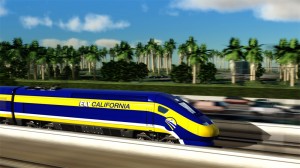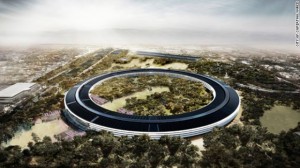 Google made headlines recently for buying a huge property adjacent to the future downtown San Jose high speed rail station, per the San Francisco Chronicle:
Google made headlines recently for buying a huge property adjacent to the future downtown San Jose high speed rail station, per the San Francisco Chronicle:
Google has been in negotiations with San Jose since June for a planned “village” that would feature up to 6 million square feet of office, research and development, retail and amenity space near San Jose’s Diridon Station. The development could bring 15,000 to 20,000 jobs, Nanci Klein, San Jose’s assistant director of economic development, previously told The Chronicle.
To be sure, this property would be valuable for Google even without high speed rail, as it’s at the heart of San Jose’s light rail network. But high speed rail will only increase the value, as it would give Google employees high-speed train access to businesses to the south and through the San Joaquin Valley — and eventually Los Angeles.
So the question is: would a property owner like Google be willing to help finance high speed rail, which is badly in need of cash? It’s the old school way of funding trains: leverage the future increases in property values around the stations to finance the transportation.
Given the slow trickle of state dollars and nonexistent federal funds, high speed rail leaders will need to get creative about how to find money to keep construction going. A large company like Google could greatly help with the search.
Perhaps a metaphor for their approach to innovation, Apple is fully embracing the sprawl office model of the past, while Google embraces the future with talks to build a downtown San Jose campus near rail.
The Apple “donut” campus (photo right), set to open soon in Cupertino, is a giant parking lot with an office building on top, no matter how many solar panels and EV charging stations the company boasts about adding. It was Steve Jobs’ last vanity project, and at heart it’s firmly of the decade he was born — the auto-oriented suburban office campus of the 1950s.
Meanwhile, Google looks to be following other advanced tech companies, like Amazon, LinkedIn, and Salesforce, by exploring options for a high-rise, infill mixed-use office right next to the future high speed rail stop and current Amtrak and Caltrain depot in downtown San Jose.
Silicon Valley is an an absolute housing and traffic crunch, due to those cities’ willingness to permit office sprawl but no accompanying housing. The choice by Apple will only reinforce that failed dynamic, while Google’s efforts show that the worker of tomorrow does not want to repeat the insanity.



